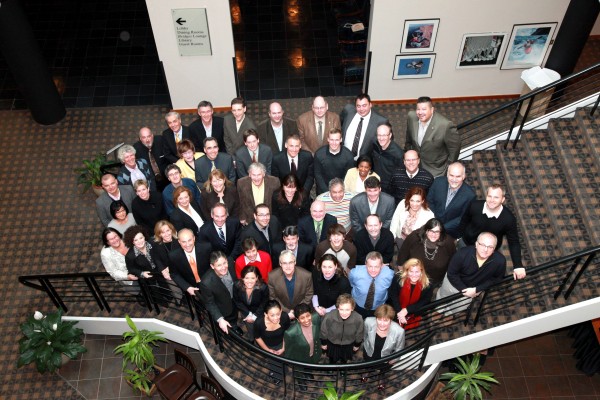 This guest post was written by William Kierstead. His career has spanned 27 years in public education in the province of New Brunswick. He has been a classroom teacher, a high school administrator, a District Supervisor and Learning Specialist, and the Director of the 21st Century Research Office for the New Brunswick Department of Education. Most recently he has rekindled an old flame as he assumed the role of Principal at James M. Hill Memorial High School in Miramichi, New Brunswick. Go Tommies! William is married with two daughters and lives in Rexton, New Brunswick.
This guest post was written by William Kierstead. His career has spanned 27 years in public education in the province of New Brunswick. He has been a classroom teacher, a high school administrator, a District Supervisor and Learning Specialist, and the Director of the 21st Century Research Office for the New Brunswick Department of Education. Most recently he has rekindled an old flame as he assumed the role of Principal at James M. Hill Memorial High School in Miramichi, New Brunswick. Go Tommies! William is married with two daughters and lives in Rexton, New Brunswick.
In the past few years I have undergone several shifts in my career, each one moving me further from the classroom. Viewing education from a long lens gives a very different perspective on education and learning. From a thousand miles out, I was able to see the bright spots of innovation that were occurring all around me. All across the province teachers were engaging students in project based learning, technology rich curricula, truly authentic experiences and assessment strategies, stretch learning, community based projects and an appreciation for the world and our place in it.
From my vantage point, it was obvious that there were many teachers out there who were already engaging students in the kind of experiences that had come to be known as “21st Century.” The ripples created by these teachers were having a tangible impression on policy makers and stakeholders as the impact of global economies on our workforce and the reality of the technology age created a new set of expectations for public education. In many ways, I believed that the 21st Century movement was well in place before policy and official dogma caught up to it, that it already existed in pockets.
Our job as I saw it was to find those pockets of innovators, nurture them, and use them to create fertile ground for others to follow suit. However, I was also of the opinion that this shift in educational paradigms was going to happen regardless of our intervention. The train had left the station; the toothpaste was out of the tube. No matter how you looked at it, 21st Century learning was here to stay, driven by risk takers and innovative educators. The gaps in best practice would get smaller. Policy and conventional wisdom would always be in catch-up mode.
Recently I was afforded the opportunity to return to an administrative position at a high school and to work directly with teachers and students. I embraced this next phase of my career without hesitation. This move has ultimately given me a fresh perspective on the state of 21st Century Learning in Canada – “nose to nose” as opposed to “from a thousand feet out.” Because my previous view was so distant, I may have been premature in my assessment of the state of 21st Century learning in my province. At ground level, the view was somewhat different.
I have been in this role for a semester now and I see evidence of 21st Century educational practice literally everywhere I look in my school. The gaps that were obvious from orbit seem much smaller and less well defined on the ground. Indeed most 21st Century practice that I encounter on a daily basis is seamless and not necessarily overt. Educators aren’t nearly as preoccupied with the 21st Century Learning moniker as they are with creating world-class experiences for their students. Sure there are examples that stand out more than others. There are even examples of practice visible from space. I am convinced however that public education is much further down the road than previously believed. The ground is more fertile than ever before.
My view on policy hasn’t changed a great deal. Society no longer needs convincing that the purpose of education is changing rapidly. Likewise it needs no convincing that education itself must match pace with that change. Policy is not likely to get in front of the 21st Century movement. At best it will keep up. That isn’t to suggest that policy is a waste of time. In a perfect world, policy is needed urgently to encourage and reward innovation. It must cultivate those regions of excellence and create the expectation that the gaps in practice will be filled in to promote a seamless 21st Century landscape across education.
Economic and social factors in the world are conspiring to change the purpose and face of education at a pace that matches that of technological change. The role of C21 Canada, as I see it, is to provide an overarching vision and to exert pressure on the powers that oversee public education in Canada. In the absence of a national authority for education, C21 Canada is destined to provide insight, resources, research and a means for collaboration between educators from all corners of the country. C21 Canada stands poised to provide guidance to jurisdictions across this country so that the inertia remaining in the system can be overcome.
As an administrator and change agent I am excited to play a part in the upcoming symposium. The future demands that we define the next evolution of public education in Canada.

